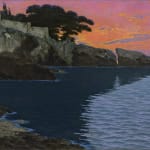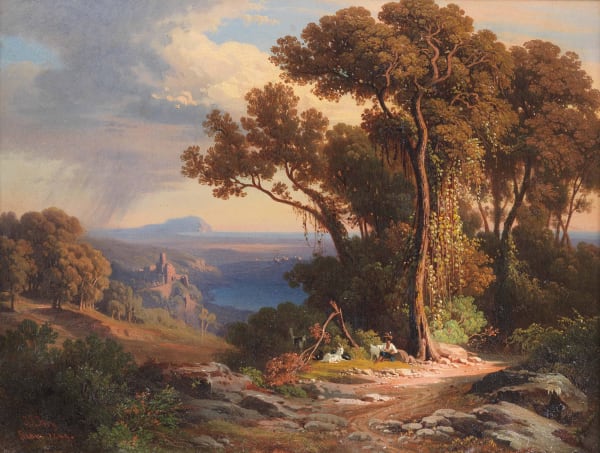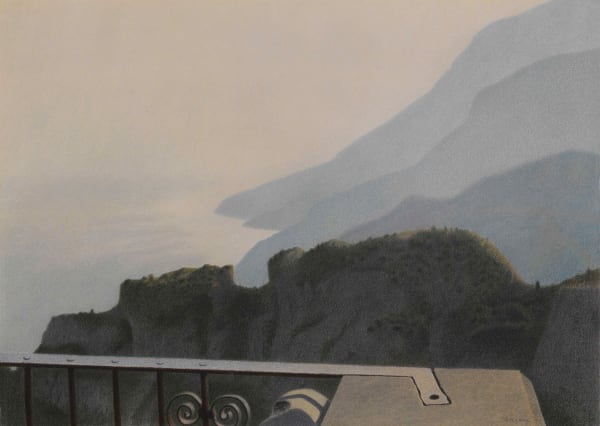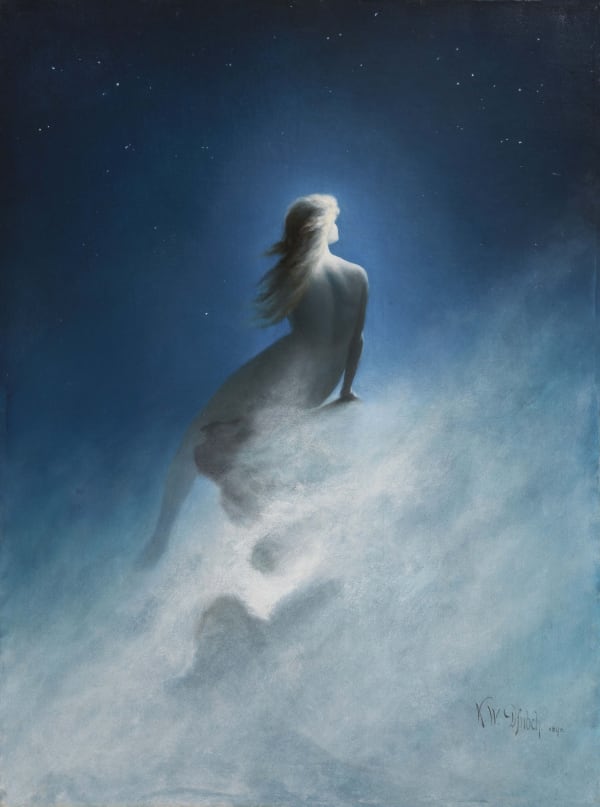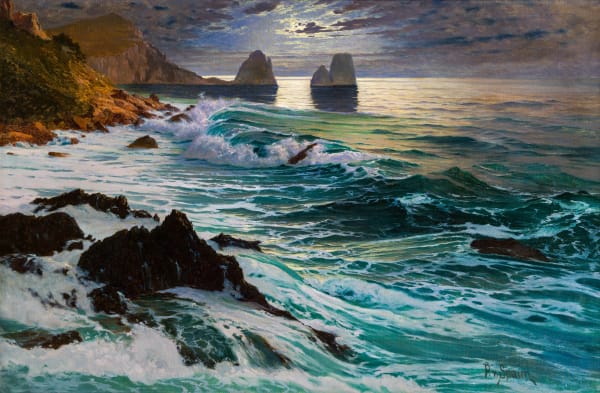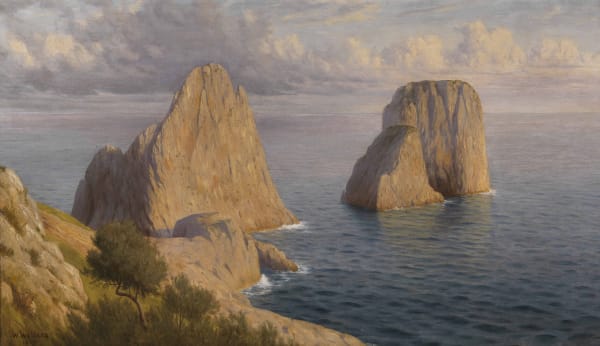
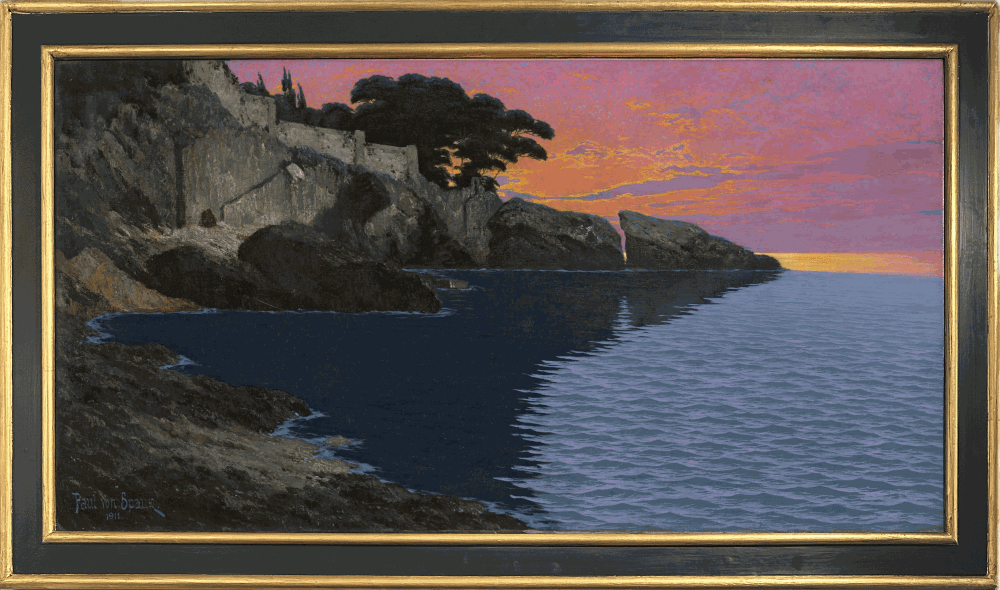

Paul VON SPAUN 1876 Scheibbs -1932 Innsbruck
82 x 146 x 4 cm (with the frame)
Paul von Spaun was the youngest of seven siblings born into an aristocratic Austrian family. Following in the footsteps of his brother Friedrich, he himself a painter, Paul devoted himself to the world of art, first attending the Academy of Fine Arts in Vienna and then continuing his studies in Munich, where he mainly focused on portraiture. In 1897, Paul and his brother Friedrich joined the “Humanitas” artists’ commune founded by Carl Wilhelm Diefenbach.
Paul’s familiarity with the latter exerted a huge influence on both his painting and his lifestyle. Diefenbach led a life of continuous struggle with the constraints and contradictions of bourgeois society, becoming a leading light of nudism, vegetarianism, and naturism in an incessant search for a primitive and primordial religiosity, aimed at rediscovering the archaic relationship between Man and Nature. In the early years of the twentieth century, Diefenbach moved to Capri, soon followed by Von Spaun, and they were to remain there until the outbreak of the First World War, finding this Neapolitan island an inexhaustible source of inspiration.
During these years, Paul von Spaun created several extraordinary paintings, almost all seascapes, which allowed him to enjoy great, well-deserved fame. From his master the artist learned how to deal with colour and light in an exemplary way, two elements that play a key role in his works.
In the refined sunset presented here, in which the intensity of the sun’s heat has imbued the sky with infinite hues and the waters of the sea with as many reflections, we find great technical proficiency in the painter’s use of colour. The silhouettes of the pine trees darkly imprinted beyond the cliff to contrast the delicate chromatic veils of the sky, are an example of great painterly prowess.
As for the subject depicted, we can identify this particular view with the island of Capri, where von Spaun and Diefenbach remained until the outbreak of war, thanks to the discovery of another painting, this time by Diefenbach, dated bottom left “Capri 1900”.

K.W. Diefenbach, Capri, 1900
-
 Johann Jakob FREYView of Lake Nemi and Monte Circeo from Monte Cavo, 1849
Johann Jakob FREYView of Lake Nemi and Monte Circeo from Monte Cavo, 1849 -
 Vilhelm KYHNStudio di cielo e nuvole al tramonto, 1843
Vilhelm KYHNStudio di cielo e nuvole al tramonto, 1843 -
 RANDALL MORGANThe Amalfi Coast from Ravello, 1976
RANDALL MORGANThe Amalfi Coast from Ravello, 1976 -
 WILLEM WELTERSView of Monte Solaro in Capri, c. 1915
WILLEM WELTERSView of Monte Solaro in Capri, c. 1915 -
 KARL WILLHELM DIEFENBACHQuestion to the Stars, 1898
KARL WILLHELM DIEFENBACHQuestion to the Stars, 1898 -
 Paul VON SPAUNView of the Faraglioni in Capri
Paul VON SPAUNView of the Faraglioni in Capri -
 KARL WILLHELM DIEFENBACHTiberius’ villa on Capri, 1910 c.
KARL WILLHELM DIEFENBACHTiberius’ villa on Capri, 1910 c. -
 Willem WELTERSThe Faraglioni of Capri, 1917
Willem WELTERSThe Faraglioni of Capri, 1917 -
 KARL WILLHELM DIEFENBACHSeagull flying over the remains of Villa Jovis in the moonlight, 1901
KARL WILLHELM DIEFENBACHSeagull flying over the remains of Villa Jovis in the moonlight, 1901
Join the mailing list
Subscribe to our newsletter to receive all the news about exhibitions, fairs and new acquisitions!
